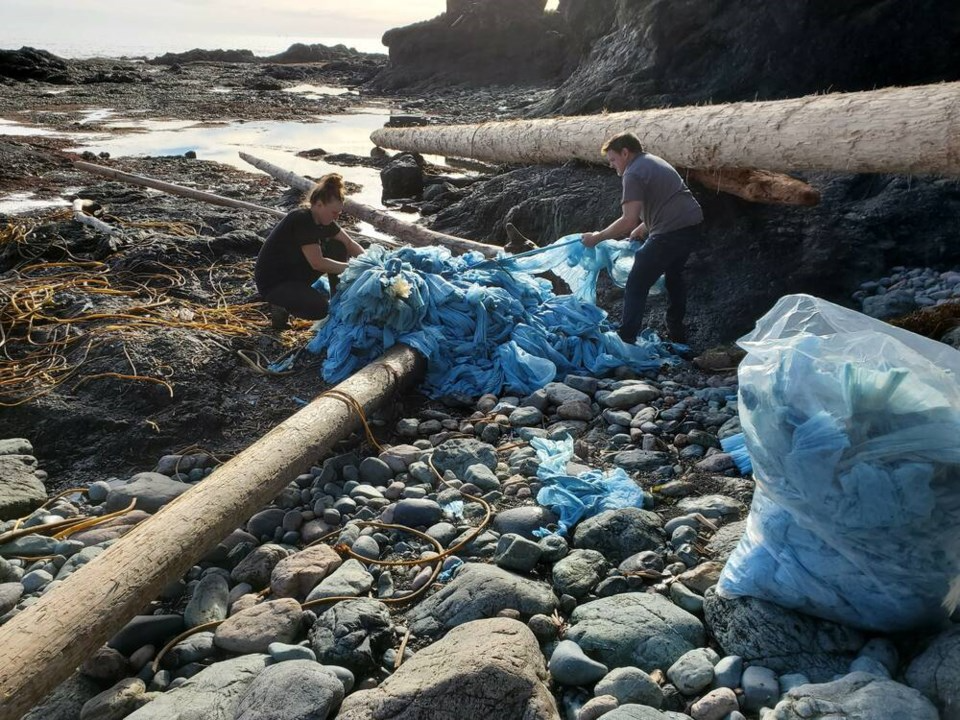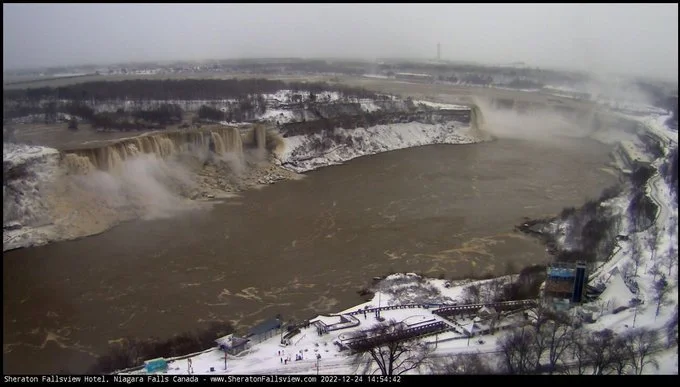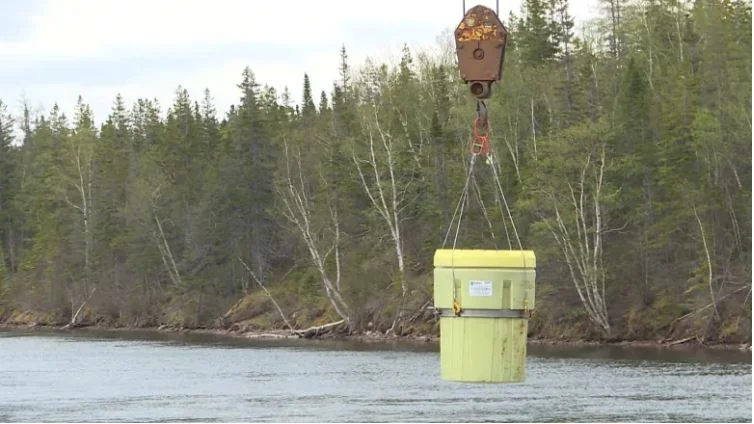Edmontonians are being asked to “exercise extreme caution” as water levels rise on the North Saskatchewan River and its tributaries following continuous rainfall this week. City officials in a Thursday news release warned that the river, shorelines and trails directly near the river may be unsafe due to rising water levels and increased current flow following a rain storm that dumped a large amount of rain on the province over the last 24 hours. The city said flooding may occur in some areas along the North Saskatchewan River and other natural waterways.
4,000 square kilometres of land has burned near Sambaa K'e. What does that mean for fish?
After a wildfire tore through the forest around Kakisa, N.W.T., in 2014, Lloyd Chicot began noticing changes in the lake: the pickerel grew fatter, and the pelicans moved in. Chicot, the chief of Ka'a'gee Tu First Nation, attributes the change partly to climate change and partly to runoff from the fire, which brought nutrients and debris into the lake. "Right after the fire, there was a lot of burnt driftwood and that kind of stuff," he recalled.
Diving for debris: Kingston divers pull garbage out of Lake Ontario on day of cleanup, awareness
Pulling a large truck tire from the water, volunteer Derek Evans says he is not sure how long it has been at the bottom of Lake Ontario. It’s filled with zebra mussels and mud, but the rubber has the potential to be a serious issue. "This is at least 50 pounds," Evans says. "It definitely would be a lot of damage to the fish and the wildlife in the water." Getting this tire, and other garbage, is part of a massive project called, 'Kingston Waters Clean Up.' More than 70 divers, kayakers and shorelines volunteers are bagging up garbage to keep it out of the water and drawing awareness to the issue, explains organizer Guillaume Courcy.
University of Saskatchewan teams up with Saskatoon to trap, analyze trash headed for river
The City of Saskatoon has partnered with the University of Saskatchewan for a pilot project aimed at better understanding the debris and pollution that gets into the South Saskatchewan River. Litter and pollutants enter storm drains on city roads and streets, travelling underground and eventually ending up in the river. Saskatoon Water director Russ Munro said the project will use trash traps to apprehend the debris.
Cargo from 2021 Zim Kingston spill still washing up on Island shores
When Jill Laviolette started picking debris off Cape Palmerston beach on Vancouver Island following the container spill from the MV Zim Kingston freighter, the inflatable dinosaur and unicorn toys she pulled from the sand looked nearly pristine. More than a year later, consumer goods from some of the ship’s 109 lost containers still wash up on British Columbia shores, the inflatable toys now torn to pieces by the elements to be picked up alongside vacuum cleaner parts, bike helmets, coolers and urinal mats.
Niagara Falls turned brown on Christmas Day
Tourists visiting Niagara Falls Christmas Day saw the honourary 8th wonder of the world sporting a new look - the water had turned brown. In a tweet, ECCC Canada said the water looked "chocolate," but you wouldn't want to drink the water roaring down the falls. The temporary makeover was due to winds up to 110 km/h sweeping over Lake Erie for two days prior, coupled with harsh, 9-metre waves that churned debris. So while some of the colour was due to rocks, sand, and other natural pieces of debris some was due to storm sewer backwash emptying into the Niagara River and Fort Erie, Insauga reports.
As flood waters recede, northwestern Ontario communities turn attention to cleanup, mitigation
As flood waters in the area recede, the northwestern Ontario municipality of Sioux Lookout is now shifting its focus to cleaning up, and preparing for the future. "Some people have dumpsters parked in front of their homes, and they're ripping out insulation and drywall for the two or three feet that were soaked in water," explained Sioux Lookout Mayor Doug Lawrance. "Along the shore, there's all manner of debris," he said. "From tires that might have been incorporated into the lakeside retaining walls to wood that comes from docks to flagpoles, Styrofoam, life jackets."
Fighting Floods, or Living with Water?
Every year, Lower Mainland residents prepare for the Big One. The region is located near the Cascadia subduction zone, and it’s only a matter of time before a megathrust earthquake hits. During the annual Oct. 20 ShakeOut event in southwest B.C., school kids practice diving under desks. People ready their workplaces with emergency kits and evacuation plans. But there’s another type of disaster that we’re reminded about less often: a major flood.
K'atl'odeeche First Nation welcomes members home as flooding cleanup continues
In some areas of the K'atl'odeeche First Nation reserve, pavement is caving in and buildings are leaning against power poles — but volunteers are getting as much cleaned up on Tuesday morning as they can. Tuesday afternoon, the First Nation in N.W.T. says members can return to their homes. Most of K'atl'odeeche's residents have been displaced since last Wednesday night, when floodwaters from the Hay River surged into the reserve and the town of Hay River and forced the evacuation of both areas.
Memories of 1997 flood back for Manitobans 25 years later, though many want to move on
Jacques Courcelles still vividly recalls his parents' refrigerator floating in the kitchen, anchored like a boat, its cord still attached to the wall outlet under water. "My parents had water over top of the kitchen counters. The air in the fridge was what was making the fridge float," he said, his mind flashing back to April 30, 1997, when the community of Ste. Agathe was first to fall to the Flood of the Century.
Check water management around Whitehorse bluffs, advises landslide expert
An expert who studies landslides says last Saturday's incident in Whitehorse wasn't the first and likely won't be the last. John Clague is a retired professor of earth sciences at Simon Fraser University who specializes in geological hazards such as earthquakes, tsunamis, landslides and floods. He saw pictures of the landslide and said he was surprised at the amount of water that was in the sliding material. He was also surprised by how far it went, crossing Robert Service Way, the Millennium Trail and spilling into the Yukon River.
Floating garbage bins help collect trash from Vancouver's waterways
Stationary cleaning machines called seabins are helping clear Vancouver's False Creek of garbage, one scoop of debris at a time. Sadie Caron of Fraser Riverkeeper, the charity behind the project, says the bins are attached to various spots around Granville Island. They skim the surface of the water 24 hours a day with the help of an electric pump to capture any sort of floating debris.
Lack of funding for piped water on First Nations in Sask. means some on reserves can’t drink from their taps
Rebecca Zagozewski, executive director with the Saskatchewan First Nations Water Association, says cisterns can pose health risks to those who rely on them. She says the structures can have cracked lids, which allows all sorts of debris to get into them — including rats, mice, drowned puppies and garbage — and they’re often not cleaned properly. On top of that, she says the Saskatchewan First Nations Water Association is concerned that there is no certification program for water truck drivers. The group wants to create such a program where drivers would have to be trained in how to keep the water safe and be held accountable if things go wrong. “Because right now there’s no accountability,” she says.
Kruger hauls decades-old barrels from the depths of Deer Lake's water supply
Fifty-five metal barrels, left for decades to deteriorate at the bottom of the Humber Canal, are seeing the light of day this week as Corner Brook Pulp and Paper undertakes a big cleanup. The debris predates the mill's current ownership under Kruger, but the company estimates they've been decaying since about the 1950s, although their presence went undetected until residents raised red flags two years ago. The 11-kilometre canal supplies the Deer Lake Powerhouse, which in turn generates electricity for the mill, and also does double duty as the town of Deer Lake's water supply.















